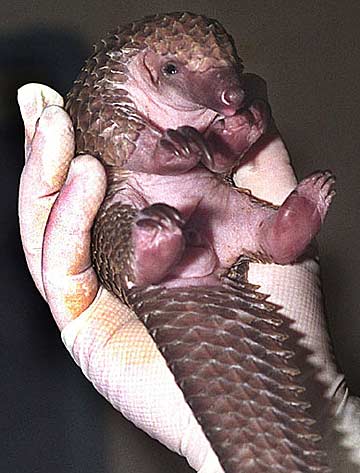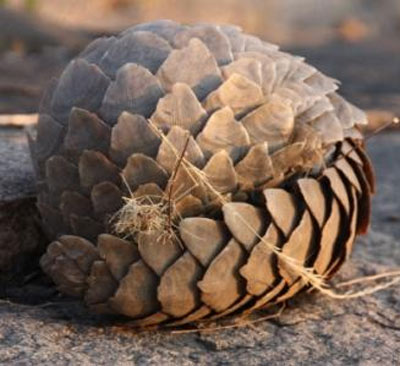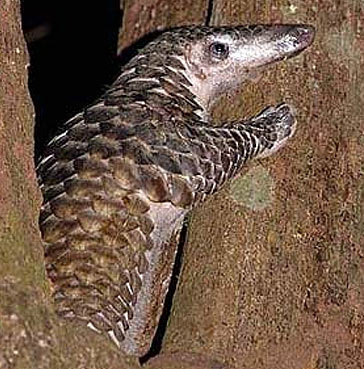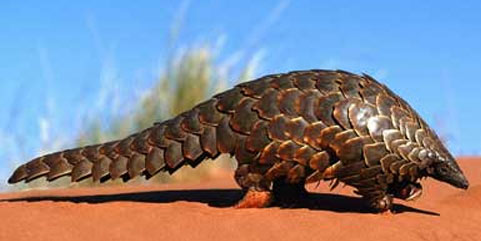Pangolin – Plated Body Armor

Baby Pangolin
The scaly-plated pangolin looks more like a reptile than a mammal. Easily recognized by its hard protective body armor, it has a long tail for climbing and a pointed snout for sticking its nose in termite nests. Powerful curved claws allow it to rip apart anthills and open dirt mounds to gorge on insects with its long, sticky tongue protruding out.
With a keen sense of smell, pangolins feed mostly on termites, ants and their eggs, eating hundreds of thousands of ants for just one meal. Hard scales, tiny ears and thick skin help it to ward off ant bites as it demolishes an entire nest.

Found in tropical Africa and Asia, some species dig underground burrows while others live in hollow trees. They forage mostly at night and rest during the day. Pangolins climb with strong, gripping forelimbs and a tail that curls over outstretched branches for support in search of swarms of leaf nesting weaver ants. If approached by a predator, the pangolin rolls into a tight, impenetrable ball with its tail and legs covering its head for complete protection.

Pangolins are hunted for their meat, considered a delicacy, in both Africa and Asia. And traditional medicine users believe their scales help reduce swelling and improve blood circulation. These beliefs lead to the illegal poaching of pangolins to supply the Chinese demand for special soups and scales. Tons of animals and frozen carcasses are smuggled across Asia each year, thus rapidly depleting the wild stocks of this endangered species that may be living on the edge of extinction.

It is difficult to really know how many pangolins are left in the wild. Every year more and more end up in cooking pots, despite the efforts of wildlife officials to stop the illegal trade.
